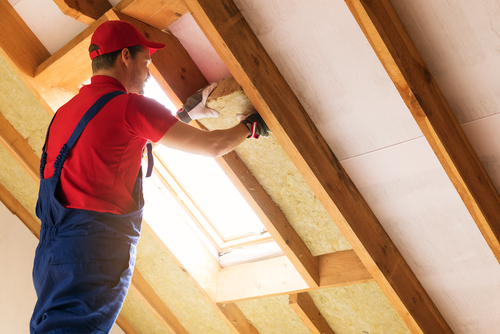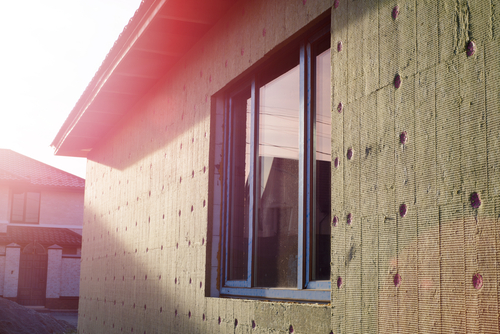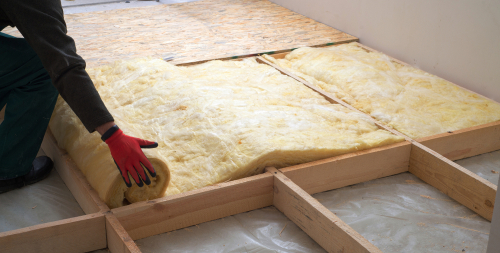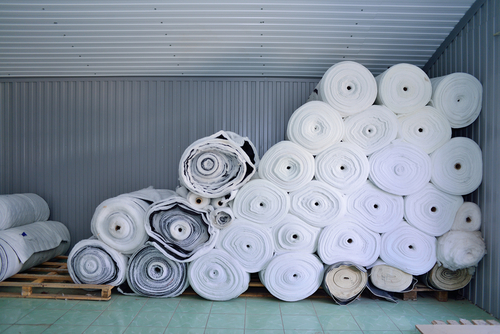
If you’re currently searching the market to see what’s available for your budget it can be helpful to gain an understanding of home insulation and why it matters. Properties without loft and cavity wall insulation can be less energy efficient which can mean higher energy bills, whilst new builds are designed to save you money on energy.
Considering a new build property?
New build properties have to comply with the most recent building regulations, including energy efficiency, so if you choose a new build you shouldn’t have to worry about whether it’s insulated or not.
A new build can be up to 65% more energy efficient than the same sized older home that has had modern improvements.
For a three-bedroomed semi-detached home, this could mean an annual energy spend saving of £890, or for a four-bedroomed detached home, a saving of £1,410.
Loft insulation

Ideally, you want the loft in any prospective home to have loft insulation with a depth of between 250 to 270mm.
On your viewing why not try to have a quick look in the loft to see if there is adequate loft insulation?
If it doesn’t have any currently, it could be losing up to 25% of its heat through the roof. Should you decide to buy the property, you might want to get it insulated as soon as you can.
You could potentially save up to £225 a year on your energy bills, depending on the type of property.
Depending on your circumstances, you may be eligible for a government grant that would wholly or partly cover the cost of insulating your loft.
If you live in an old home, own your home and receive some form of benefit, this will be worth investigating.

Wall insulation

Wall insulation is a means of stopping the cold outside from passing through your walls and getting inside.
It can be external or internal, while newer homes will have cavity insulation that fills the middle.
Most homes in the UK will have cavity walls, but those built before the 1920s will likely have solid walls.
Insulating your solid walls could cut your heating costs considerably, because solid walls let through twice as much heat as cavity walls do. The good news is they can be insulated.
If a property you’re interested in was built from the 1990’s onwards it should have wall insulation but if it’s older it might not.
You could ask the estate agent or vendor if the property has wall cavity insulation while you’re on your viewing.
If you buy a property without wall insulation you could end up paying between £70 – £225 more on your energy bills annually, unless you get some installed.

Floor insulation

In older properties with suspended timber floors and no insulation, heat can be lost through the floorboards, even if you have carpet down.
To try and prevent this happening you could fill in the gaps using Draughtex, an insulating foam which squeezes down to 90% its original size to block up small spaces.
This helps trap heat in and could save you up to £40 a year on your energy bills.
What options are there?
When it comes to insulation there are four main types:
- Matting – Also known as quilt and blanket insulation. This is the most popular way of insulating a loft but it’s also used to insulate floors and stud walls.It is sold in rolls of varying depths and is usually made from glass fibre, rock fibre or sheep’s wool.
- Loose-fill – This is sold in bags and then poured out. Made from cellulose fibre, mineral wool, cork granules or vermiculite, it can be ideal for the corners and less accessible areas of your loft.

- Rigid insulation boards – This type of insulation is used for ceilings, walls and floors. It’s usually made from polystyrene, polyisocyanurate (PIR) or polyurethane (PUR). The pieces have to be cut to size before fitting.
- Blown insulation – Made from fire-resistant cellulose fibre (mineral wood or recycled newspapers) this can be used to insulate stud walls or lofts. It must be installed by a professional.



